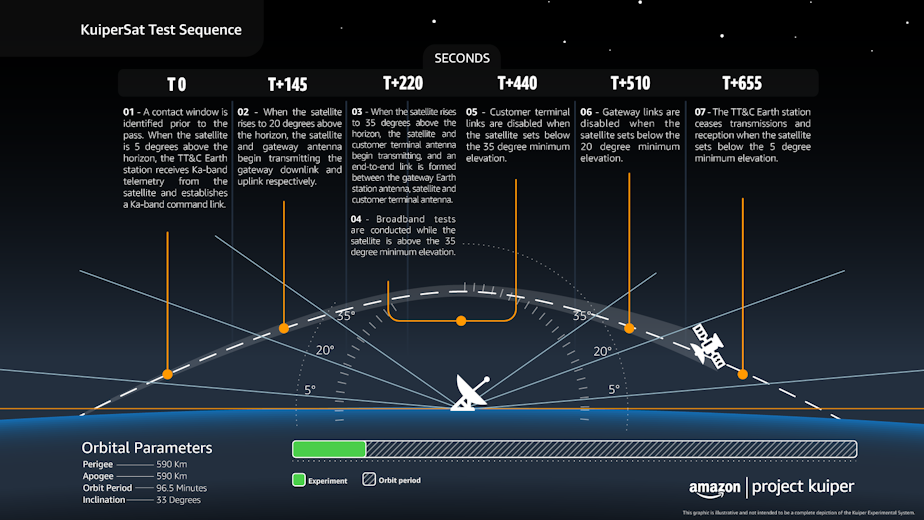Amazon ready to begin building its world-encircling network of satellites

Amazon asked the Federal Communications Commission today to let it launch experimental satellites into low-earth orbit.
The system is being developed in Redmond, and it's called Project Kuiper.
The satellites would be the first in its proposed network of over 3,000 satellites that would beam high-speed internet service to people from 366 miles above the planet’s surface.
Amazon says the system could bring internet speeds of over 400 megabytes per second to rural areas. If true, that’s faster than a competing system by Elon Musk’s Space X, which is much further along with over 1,000 satellites in orbit already.
Space X's satellite program is also based in Redmond.
Both companies' systems depend on cloud computing operations on the ground. Space X contracts with Microsoft to perform some of that work.
To receive Amazon's signal, customers would need a special antenna that Amazon’s developing.
Sponsored
Deployment
Amazon’s first two satellites would launch separately from Florida on a pair of rockets built by a California-based company called ABL Space Systems. According to ABL's website, an average rocket launch costs around $12 million.
After being released, Amazon's satellites would tumble around a bit, then steady themselves using ion thrusters fueled by noble gases.
During the six minutes or so it takes the satellites to travel from horizon to horizon, Amazon would run internet speed tests to see how the system is working. The satellites would pass overhead several times per day.
Amazon would test the signal using a couple of its consumer antennae. They'll be positioned in rural Texas a couple hours drive northwest of Austin.
Sponsored
Risks
With more companies launching satellites, there is some small risk of collision with other objects. Amazon’s satellites have thrusters to help them avoid debris and other satellites.
The average projected lifespan of each satellite is two years. After their useful life, they’ll push themselves lower until they’re out of fuel, then gradually sink into the atmosphere where they will break apart upon reentry.
According to the FCC application, Amazon says most pieces of the satellite will burn up, with some falling harmlessly to the ground. There is one component of the satellite, called the "reaction wheel rotor," that could kill someone, if it landed on them. Amazon says the risk of that happening is 1 in 18,000 for each satellite.
Back-of-the-napkin math suggests that as these systems grow and age, the risk of casualty could approach 1 in 3 or even 1 in 2 (the odds of a coin flip) every few years (beginning in the late 2020s) as each generation of thousands of Space X and Amazon satellites reenter the atmosphere.
As frightening as that may be, the odds of any individual person getting hit by space debris is likely 1 in 30 billion in any given year, which is far less likely than the risk of getting hit by a car while crossing the street in the U.S. (1 in around 4,000, according to reference.com).

